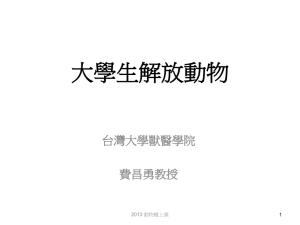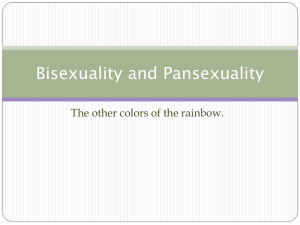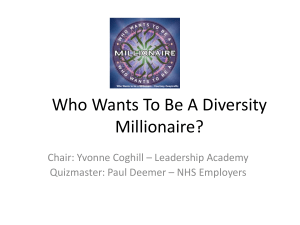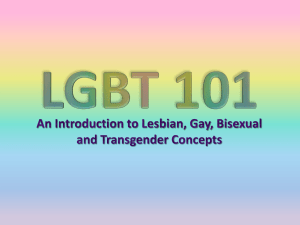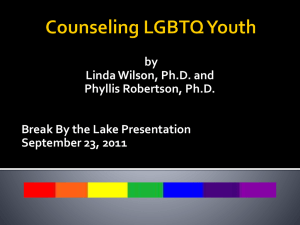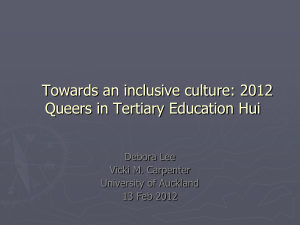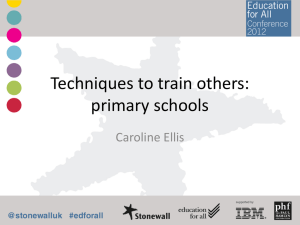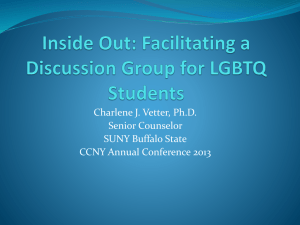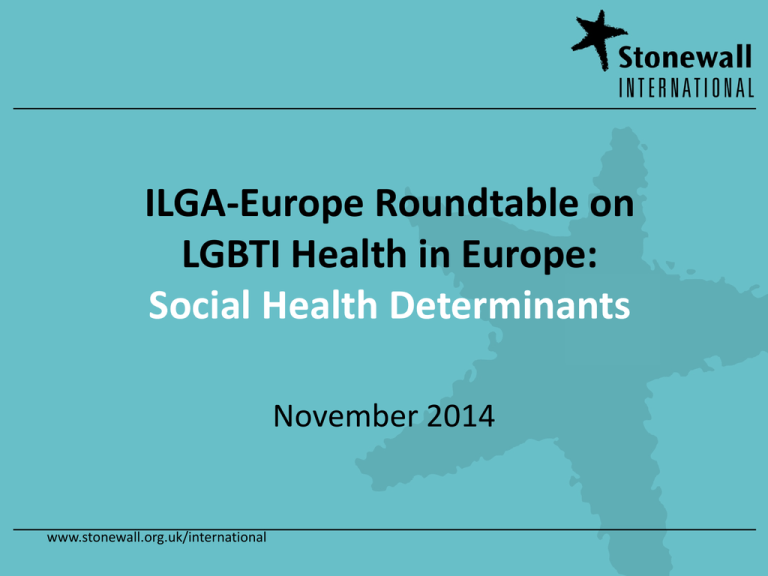
ILGA-Europe Roundtable on
LGBTI Health in Europe:
Social Health Determinants
November 2014
www.stonewall.org.uk/international
Stonewall’s health research
Stonewall Health Briefings
(2012)
• Specific health briefings on Bisexuality, Disability, Domestic
Abuse, Ethnicity, Experiences of Healthcare, and Mental Health.
Gay and Bisexual Men’s Health
Survey (2012)
• 6,861 respondents from across Britain: largest survey ever on
gay and bisexual men’s health needs in the world.
Sexual Orientation: A guide for
the NHS (2012)
• Guide to supporting LGB patients and staff. Based on
Stonewall’s ongoing work with dozens of NHS organisations.
Lesbian, Gay and Bisexual
People in Later Life (2011)
Prescription for Change:
Lesbian and bisexual women’s
health check (2008)
www.stonewall.org.uk/international
• Stonewall commissioned YouGov to survey 1,050 heterosexual
and 1,036 LGB people over the age of 55 across Britain.
• Over 6,000 women completed the survey, making this the
largest survey of L&B women's health needs outside the US.
Prescription for Change: Lesbian and
bisexual women’s health check (2008)
In 2007, Stonewall invited lesbians and bisexual women to
complete a survey about their health needs and experiences of
the health sector. We were overwhelmed with the response.
Over 6,000 women completed the survey, making this the
largest survey of lesbians' and bisexual women's health needs
outside the US. The picture they paint should disturb any
healthcare practitioner.
Key findings
Lesbians are more likely to have smoked and to drink heavily
than women in general. At various ages they are less likely to
have had a smear test and more likely to have had breast
cancer. Levels of self harm and suicide are significantly higher
than in the wider population. Half have had negative
experience of healthcare within the last year alone and a
similar number feel unable to be open about their sexual
orientation to their GP.
www.stonewall.org.uk/international
Findings in focus
Smoking, alcohol and drugs
Cancer screening
- Two thirds of lesbian and bisexual women have
smoked compared to half of women in general.
- Just over a quarter currently smoke.
- Nine in ten lesbian and bisexual women drink and
40 per cent drink three times a week compared to a
quarter of women in general.
- Lesbian and bisexual women are five times more
likely to have taken drugs.
- Over one in ten have taken cocaine, compared to
three per cent of women in general.
- Fifteen per cent of lesbian and bisexual women
over 25 have never had a cervical smear test,
compared to seven per cent of women in general.
- One in five who have not had a test have been told
they are not at risk.
- One in twelve lesbian and bisexual women aged
between 50 and 79 have been diagnosed with breast
cancer, compared to one in twenty women in
general.
Sexual health
- One in five lesbian and bisexual women have
deliberately harmed themselves in the last year.
- Half of women under 20 have self-harmed.
- Five per cent have attempted to take their life in the
last year and sixteen per cent of women under 20 have
attempted to take their life.
- Less than half of lesbian and bisexual women have
ever been screened for sexually transmitted
infections.
- Half of those who have been screened had an STI
and a quarter of those with STIs have only had sex
with women in the last five years.
www.stonewall.org.uk/international
Mental health
Gay and Bisexual Men’s
Health Survey (2012)
With 6,861 respondents from across Britain, this is the largest
survey ever conducted of gay and bisexual men’s health needs
in the world. However, it demonstrates that many of the needs
of gay and bisexual men are not being met and that there are
areas of significant concern – most particularly in mental health
and drug use – that have been overlooked by health services
which too often focus solely on gay men’s sexual health.
The survey covers eight areas: Smoking alcohol and drugs;
General fitness and exercise; Mental health; Eating disorders
and body image; Domestic abuse; Cancer and common male
health problems; Sexual health and HIV; Discrimination in
healthcare.
Key findings
The report provides clear evidence that gay and bisexual men
nationwide are more likely to attempt suicide, self-harm and
have depression than their straight peers. They are also more
likely to smoke, drink and take illegal drugs. It ill-serves our gay
and bisexual communities when these uncomfortable truths are
ignored.
www.stonewall.org.uk/international
Findings in focus
Mental health and well-being
Smoking, alcohol and drug use
- In the last year, three per cent of gay men and five
per cent of bisexual men have attempted to take
their own life.
- One in sixteen (six per cent) gay and bisexual men
aged 16 to 24 have attempted to take their own life
in the last year.
- One in fourteen gay and bisexual men deliberately
harmed themselves in the last year.
- One in six (15 per cent) gay and bisexual men aged
16 to 24 have harmed themselves in the last year.
- While smoking and alcohol consumption among gay
and bisexual men is broadly similar and/or slightly
higher than men in general, illegal drug use is much
higher.
- Two thirds (67 per cent) of gay and bisexual men
have smoked at some time in their life compared to
half of men in general who have smoked.
- Eight in ten (78 per cent) gay and bisexual men had
a drink in the last week compared to seven in ten (68
per cent) in general.
- Half (51 per cent) of gay and bisexual men have
taken drugs in the last year compared to just 12 per
cent of men in general.
www.stonewall.org.uk/international
Social inequalities
Gender & LGBT health
Gender, ethnicity & LGBT health
As the reports demonstrate, lesbian and bisexual
women may experience health problems which
are driven by their gender as well as sexuality.
Black and minority ethnic LGB people are more likely to have
self-harmed, attempted suicide, and taken drugs than LGB
men and women in general.
Healthcare discrimination
• A third of gay and bisexual men are not out to their
GP, and a third have had a negative experience
related to their sexual orientation in the last year. For
lesbian and bisexual women those figures are both
half.
Of black and minority ethnic lesbian and bisexual women
• 55 per cent are not out to their GP or other healthcare
professionals and 54 per cent have had negative experiences in the
past year.
• Seven per cent have attempted to take their life in the past year.
• 12 per cent said their healthcare professional acknowledged they
were lesbian or bisexual after they’d come out (26 per cent of
white lesbian and bisexual women).
Mental health
• One in fourteen gay and bisexual men have
deliberately harmed themselves in the last year. For
lesbian and bisexual women that figure is one in five.
• Ten per cent of gay and bisexual men aged 16-19
have attempted to take their own life in the last year,
compared with sixteen per cent of lesbian and
bisexual women aged under 20.
www.stonewall.org.uk/international
Of black and minority ethnic gay and bisexual men
• 55 per cent have experienced at least one incident of domestic
abuse from a family member or partner since the age of 16 (17 per
cent for men; 50 per cent for gay/bi men in general).
• 37 per cent have had a negative experience related to their sexual
orientation in the past year in a healthcare setting.
Social inequalities
LGB people in later life
We know from YouGov
polling of 1,036 older
lesbian, gay and bisexual
people and 1,050
heterosexual older people,
comissioned by Stonewall,
that a significant proportion
of older gay people are:
Have limited family
support. LGB older people
are less likely to have
children and less likely to
see biological family
members on a regular basis.
Gender identity
More likely to live alone. 41
per cent of LGB older
people, compared to 28 per
cent of heterosexual older
people.
Our 2014 YouGov Polling of
100 trans people found that
health and social care
inequalities was the number
one priority. Stonewall’s
consultation with around 500
trans and gender nonconforming people has so far
included the following
recurring themes:
GPs often lack understanding
of the gender reassignment
care pathway, and
automatically refer to mental
health services.
Rely on formal services for
help in the future. 50 per
cent of LGB older people
are uncomfortable being
out to care home staff, 33
per cent to a housing
provider, and 20 per cent to
a GP.
Often trans status is the focus
of every healthcare
interaction, even when
seeking routine medical
treatment.
NHS staff across the board
lack training in sensitive
treatment of trans patients
(e.g. proper use of pronouns,
sensitivity to the language
people prefer to use to
describe their bodies etc.)
www.stonewall.org.uk/international
Summary
•Complexity of people’s identities and situations; LGBT people are many other things,
as well as LGBT.
• Importance of understanding how social inequalities might interact with and
compound one another.
• Social as opposed to biological or physical drivers.
• Various areas of concern already marked by stigma and discrimination.
• Wide areas of health (and social policy) are involved.
• Isolation from health and social care services is a general feature.
• Misrepresentation within healthcare settings (e.g. use of stereotypes, assumptions,
incorrect language) is also a general experience.
www.stonewall.org.uk/international
What can be done?
• Reduce violence, discrimination, stigma and social exclusion against/of LGBT people,
and against all, in general .
• Promote widening of what we understand by LGBT health to beyond a focus on
MSM and sexual health (also, inclusion of ‘social’ issues – bullying and domestic
abuse).
• Destigmatising approach – both of LGBT communities and, importantly, of those
areas of health marked by stigma and discrimination for anyone.
• More research (e.g. longitudinal studies, T* and I*, social class, cross-country). Also
SOGI data collection.
• Training of healthcare providers – especially more systematic training which is
embedded into practice (e.g. Stonewall’s pilot study with Cardiff Medical School), and
focus on delivery.
• Proactive approach from healthcare providers to reach out to affected communities,
and to actively demonstrate that services are for them.
• Develop programmes to help make this happen (e.g. Stonewall’s Health Equality
Index and Health Champions Programmes).
www.stonewall.org.uk/international
For more information:
www.healthylives.stonewall.org.uk
Thank you!
www.stonewall.org.uk/international


